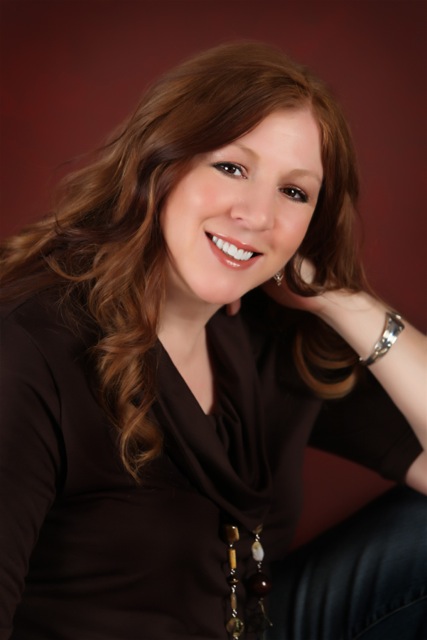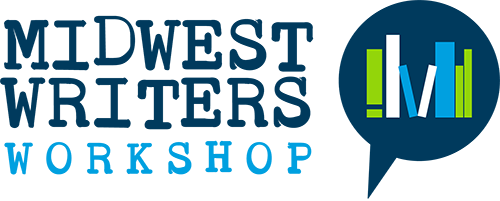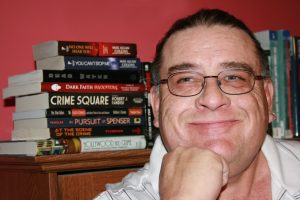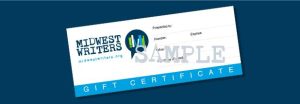 Kelly O’Dell Stanley is full of doubt and full of faith. In 2013, Kelly’s essay “Amazing Grace” won the Writer’s Digest Inspirational Writing Competition, and she’s the author of Praying Upside Down and Designed to Pray (coming in August 2016). With more than two decades of experience in advertising, three teen and young adult kids, and a husband of 25 years, she’s learned to look at life in unconventional ways-often upside down. She enjoys living in small-town Indiana, where she operates her own graphic design business, reads too much and cleans too little, and thrives on coffee and deep discussions with friends.
Kelly O’Dell Stanley is full of doubt and full of faith. In 2013, Kelly’s essay “Amazing Grace” won the Writer’s Digest Inspirational Writing Competition, and she’s the author of Praying Upside Down and Designed to Pray (coming in August 2016). With more than two decades of experience in advertising, three teen and young adult kids, and a husband of 25 years, she’s learned to look at life in unconventional ways-often upside down. She enjoys living in small-town Indiana, where she operates her own graphic design business, reads too much and cleans too little, and thrives on coffee and deep discussions with friends.
MWW committee member Cathy Shouse recently interviewed Kelly about her MWW sessions.
* * *
MWW: What are some ways attendees can benefit from attending MWW this summer? How has your attendance, prior to coming on to the committee in 2015, influenced your career? You seem to have “colored outside the lines” and found friendships and collaborations that have propelled your career. Any tips on how others can do that?
KOS: Nearly everything I know about this industry–and writing–I learned at MWW (no exaggeration). Flash fiction sessions taught me to get right to the heart of a story; creative journalism sessions taught me better ways to tell true stories; a storyboarding intensive taught me about structure–and I’ve learned tons about platform building and promotion. The broader your exposure to multiple genres and techniques, the better your writing will be.
But the reason I love MWW the most? The friends I’ve made here. A handful of us connected deeply and quickly. They’re good writers, and they’ve helped me improve, but more than anything, their friendship makes my life richer. We write in different genres but support and admire each other’s work–pushing each other to get better, to keep working, and not to give up when things aren’t going as well as we’d like. Coming from different backgrounds, too, we are able to offer new insights into each other’s work.
The best tip I can offer is this: when you meet people (successful authors or those starting out; agents, editors, publishers, or what have you), don’t think about what they can do for you. Instead, be genuine in your interest and friendship. If you have anything to offer them (reviews of a book, sharing something on social media), do so without expecting a return favor. Be real, generous–and yourself. Ultimately, it’s likely that some of these people will help you in very real ways (like endorsements, guest blog posts, etc.). But that can’t be your motivation or you’ll never truly connect with them.
For example, I first met Elizabeth Berg at a writing workshop in Italy. I went to learn about fiction; instead, she pushed me to face my grief and loss of faith, and that experience resulted in an essay that won the inspirational writing category of the Writer’s Digest competition–and led to an endorsement from Elizabeth for my first book. I didn’t go into it expecting anything, just expressing my admiration for her work and being open to learning. But what I gained is immeasurable.
MWW: Your debut book, Praying Upside Down: A Creative Prayer Experience to Transform Your Time with God, had an amazing review by Elizabeth Berg, the award-winning novelist who spoke at MWW in 2015.
“Like the books of Anne Lamott, so full of honest and soulful searching, Kelly Stanley’s Praying Upside Down takes as its launch pad the precepts of the Christian faith. But what is offered here can apply to anyone, regardless of their faith–or lack thereof. What this book does is offer ways to learn and practice a humble kind of self-inventory, leading to forgiveness and generosity toward others as well as toward oneself. I found Kelly’s spiritual journey compelling and her voice clear, engaging, and irresistible.” (Elizabeth Berg)
Please give us a thumbnail sketch of how this unique book, which could only be created by a writer who is also an artist, went from idea to publication? Plus, how did it make you feel to be compared to Anne Lamott, who is so admired in your genre?
KOS: I was giddy when I got Elizabeth Berg’s review. My main goal in Praying Upside Down was to be true to my faith and accurately relate my experiences, but to do so in such a way that it was not off-putting to those who are not Christians. To get such a great review from a mainstream, New York Times bestselling novelist–and then to have her compare me to the person about whom I’ve always said, “If I could write like anyone, it would be Anne Lamott,” well, let’s just say there were a lot of tears that day. The good kind.
So, what is Praying Upside Down? When you turn an image upside down to copy it, you’ll get a more accurate result. When an image is upside down, it frees our minds from defining it, so we see what is really there, not what we expected to see. When my husband and I owned two houses for two years because we couldn’t sell the first, I started praying for the woman who would someday buy my house, and doing so changed everything for me. By taking myself out of the equation, I could see other things happening, and in the end, I believe I saw so many things God did in the process that I would have missed had I been determined that answered prayer could only look a certain way.
One day I saw that I had been praying upside down, much like an artist might draw upside down, and I realized nearly everything I know about art applies to prayer. At MWW 2011, I decided to turn that idea into a book, and in August 2012, right after MWW, I’d completed the book proposal and several chapters so I submitted to three agents. Several months later, I signed with one of them (Blythe Daniel), and in January of 2013 got offers from two publishers. Manuscript was due by end of the year and my book released in May 2015–it was a long wait, but I made the right choice because my publisher is so great to work with. In the end, my book turned out to be about 90% memoir and about 10% practical application. Most chapters contain a prayer palette, which offers creative suggestions for implementing the different artistic concepts described in terms of prayer–things like white space, composition, perspective, using the grid method, sketching, and so on.
MWW: From what we’ve heard, sometimes getting that second book contract can be as difficult as the first. For your second book, Designed to Pray: Creative Ways to Engage with God, which releases August 1st, how was your path to publication easier, if it was?
KOS: My experience defied every expectation of what is supposed to happen. Since I was a first-time author, my publisher wanted to see six months of sales figures before considering another book proposal. My book came out in May; in early June, my publisher emailed my agent. They’d teamed up with Women of Faith for two new books, and would I write one? And could I turn it in in two months? When they described the concept they had in mind–which was an idea I had described to a friend a few weeks earlier (but hadn’t mentioned to anyone in publishing)–I said yes. When I first hung up from the call with my agent, Blythe Daniel, there were tears then, too. Seems like a pattern with me. Don’t let me near Hallmark movies, either, or it could really get ugly.
Designed to Pray is a really different kind of book and was a creative challenge. Technically it’s a Bible study workbook. Each of the eight chapters begins with an essay on a new topic-praying like a child, overcoming obstacles, getting creative. The remaining days of each week are made up of a wide variety of practical exercises to help people apply those concepts, discover new truths about their faith and their prayer life, and explore prayer to broaden their definition of what it can be. These include writing, doodling, looking up Bible verses, coloring pages, filling in charts, and making things. I wrote it, but the biggest challenge was creating 56 different activities, designing them in order to lead people to unique results, and finding and suggesting visuals for all of the exercises. It was crazy and fast and complicated–and boy, was it fun.
MWW: Your session about finding and holding on to inspiration talks about “inspirational” writing. What are some challenges people writing “inspirational” face and how would you define the genre? Specifically, what types of writers will benefit? Is this all about religion? I’ve heard debates about what makes something “inspirational,” so am curious to get your take on it.
KOS: Inspirational writing doesn’t have to be religious, but most Christian publishing falls under that category. I guess I’d simply define it as writing that inspires, or a story with an uplifting purpose or intent. Although my writing is mostly about faith, I hope my sessions will appeal to all those who write to inspire others (whether that’s through a biography or fiction or whatever). We’ll talk about establishing credibility; maintaining a balance between your public and private faith (if that applies); the responsibility to authentically and factually relay our stories; and being sensitive when writing for an audience that spans denominations or religions.
I think the greatest challenge we face is maintaining authenticity. As writers of faith, specifically, I think we’re held to a higher standard in terms of living the type of life we are presenting in our work. I can’t write about prayer without actively and intentionally praying on a regular basis. I can’t give my take on the Bible without having read and studied carefully. No one is standing over me supervising me, but my faith is the most important part of who I am, and I want to get it right–or my readers will have no reason to read my books. All good writers know their subject matter, so in that respect it’s no different than what any other writer does. But in order to have any success whatsoever, I have to be as real as possible. Because readers will see right through it if I’m not.
MWW: I followed your journey through several rewrites (or revisions?) of your first book, which you shared on your Facebook page. How difficult was that time for you, what was involved and what motivated you to stay the course? Also, do you have any memorable reactions from strangers that have been part of your reward?
KOS: Tyndale has some extraordinary editors, and I was paired with a woman who totally gets what I’m trying to do in my writing. I’ll admit, I cried (devastated, heartbroken, sad tears) when I got the first round of changes from her. So I had a big glass of wine and watched TV until I fell into bed, resolutely refusing to think about it. But when I sat down at the computer the next day, I saw that they weren’t criticizing my work but making suggestions for clarity, not correcting mistakes as much as tightening and strengthening the words that were there. When I finished, I saw how much better my book was because of it–and I felt as though I’d just completed a masters’ course in creative writing.
People have been so good about contacting me and telling me what stories touched them, or how my book changed their prayer lives or reassured them that they were not alone. The messages from people asking me to pray for them are the most moving. When I think about what it would take for someone to reach out to a stranger–to trust me, based solely on the words I put on the page, to help them with something personal and important (and often, something they haven’t shared with people close to them)–that’s when I stop and give thanks for what I get to do. It shows me I’m exactly where I want to be.
MWW: For your MWW session “Embracing creativity in nonfiction,” what is a way, or a technique, you’ll be sharing that might help attendees to catch an editor’s eye?
KOS: I plan to discuss types of brainstorming and making connections between different things, because generating ideas is the basis for everything we do–marketing, publicity, the writing itself. We’ll talk about creative structures or frameworks for the story, ways to get an editor’s attention in the book proposal, how to reach and define your target audience, and ideas to implement after you have a book published or want to grow your platform.
People think of fiction as the place to be creative, but nonfiction benefits just as much from creative approaches. Even nonfiction writing itself is creativity–it’s the act of creating something that didn’t exist in that form before, of telling a true story in an interesting way. In fiction, writers do character studies–we will discuss our audiences in a similar way. Good fiction keeps upping the stakes; in nonfiction, the equivalent is adding value to the reader. Bringing in different techniques and approaches will help your work stand out.
MWW: To wrap this up, the following questions are just for fun:
Netflix or Prime or???
Usually a book, but I DVR a handful of shows and watch Netflix sometimes. Or I did, until we lost the remote this week. So I’m 100% back to books.
Coffee or tea?
E-books or paper?
Both, depending on where I’m reading. An iPad is awfully convenient to prop up beside me while I eat breakfast or lunch, so I lean in that direction unless I can get a signed paper copy or know I’m going to want to mark key passages. The night I finished the first book of a series at 10:30 and realized I could download the next book and start reading right away (rather than driving an hour to Indy the next day or waiting for UPS to deliver), I was sold.
MAC or PC?
Mac, of course, says this iPhone, iPad, Mac Book Air and Mac Pro owner. No question.



